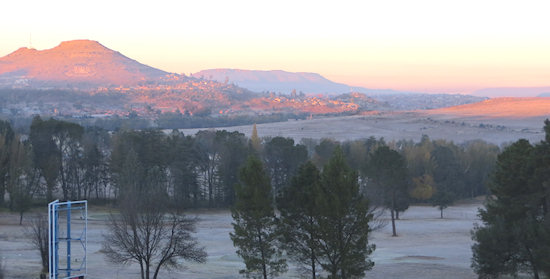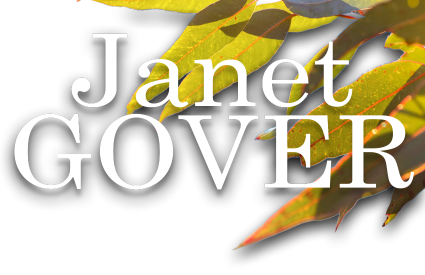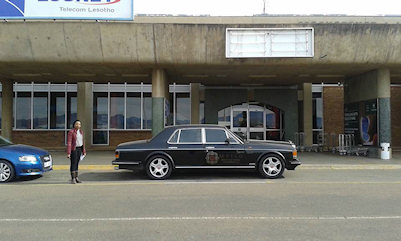
I get about a bit. As regular readers will know, my day job takes me to some pretty interesting places… and none more interesting than Maseru.
I confess, when asked to go there, I had to look it up. I always find out a bit about any country I visit before I go. But this was the first time I really knew nothing to begin with.
Google had this to say – Maseru is the capital of the mountain kingdom of Lesotho, small independent country totally enclosed within South Africa. It’s a poor nation. About 40% of the population live below the international poverty line. They make less than $1.25 US per day.
But that bland description was very very different to the place I found when I stepped off the plane.
I was working with the lovely people at the government TV station – bringing some new technology for them. The National News is run out of a stone building that at one point must have been a residence – back in the colonial days. A part of me was desperate to restore the place to its former glory.
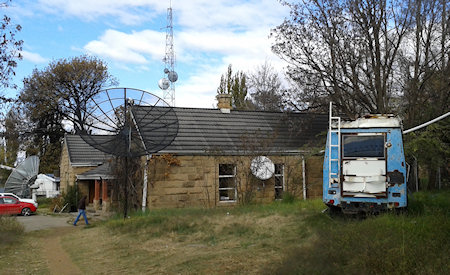
When I say ‘back’ – Lesotho has only been independent from Britain since 1966. A lot of the buildings in the capital are relics of the colonial period, but there is some new development starting.
Just outside the capital is Thaba-Bosiu. The mountain was the place where King Moshoeshoe established his fortress and is generally considered the birthplace of the nation.
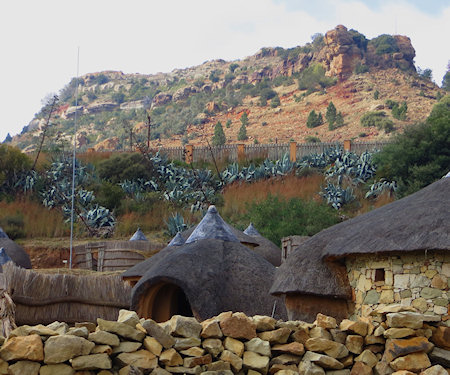
At the base of the mountain, they’ve built cultural centre. It’s been slow to develop, but I spent a morning exploring it. There are compounds representing each of the clans that King Moshoeshoe brought together as a nation. Apparently he achieved this unity by marrying someone from each clan. According to my guide – Moshoeshoe had seventy wives.
Although all built the same traditional round huts, but each had a slightly different way of doing it… mostly it was different ways of weaving and plaiting their ropes and making the walls out of whatever material was available.

A cultural event was on while I was there and food was being cooked in the traditional pots. But the men butchered the meat for the meal right beside the huts. Probably a bit too much for the more squeamish tourists.

Driving back to my hotel, I was very conscious of the poverty around me.
A lot of people still grow their own food. I have always had this classic picture on my head of the African herdsman, wrapped in a hand-woven blanket, standing guard over his beasts. That’s still what happens. Very little of the land is fenced, and herdsmen (and women too I suppose) still watch over the animals. The difference is the cars driving past, and the blankets they still wear are factory made, not hand woven.
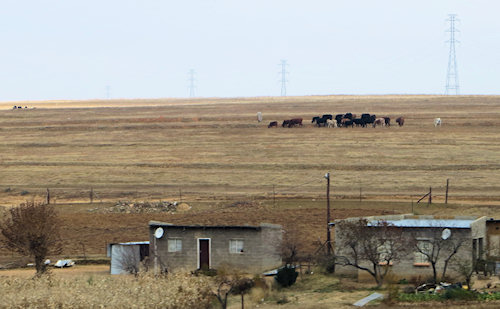
Lesotho also has one of Africa’s worst AIDS epidemics – nearly a quarter of the population are infected.
Despite the challenges the country faces, the people I was working with were lovely. They were fun and funny and eager to learn, incredibly helpful and welcoming and very proud of their heritage.

I spent almost two weeks in Maseru, and brought back some lovely pottery and weaving and some really nice memories. I’d like to go back and get further from Maseru and see more of the spectacular landscape.
But then – I’d generally like to see more of Africa. I’ve been there four times – to four different countries. Each had its own remarkable culture and history and feel. Hopefully there will be more visits in the future.
